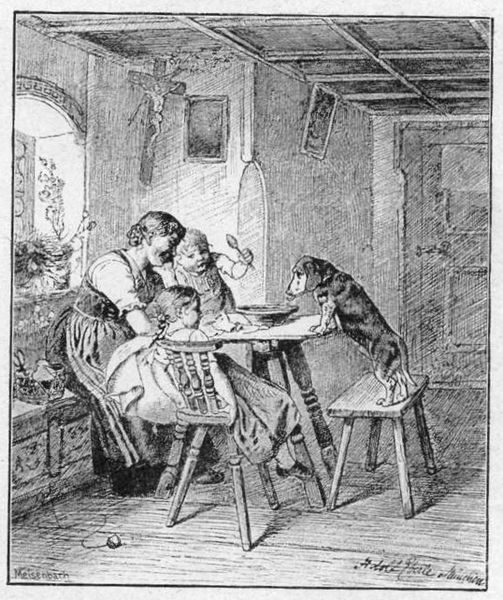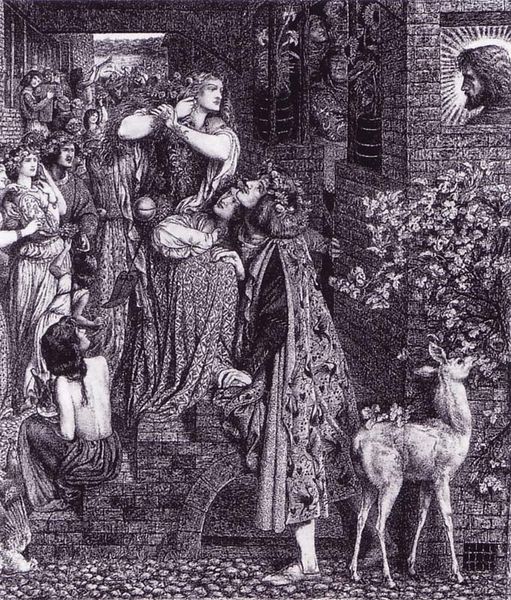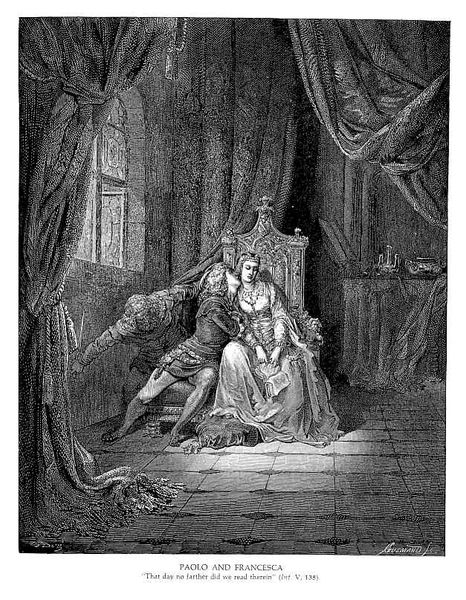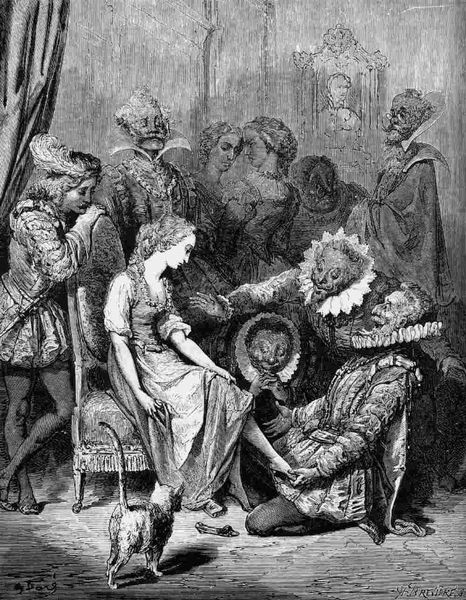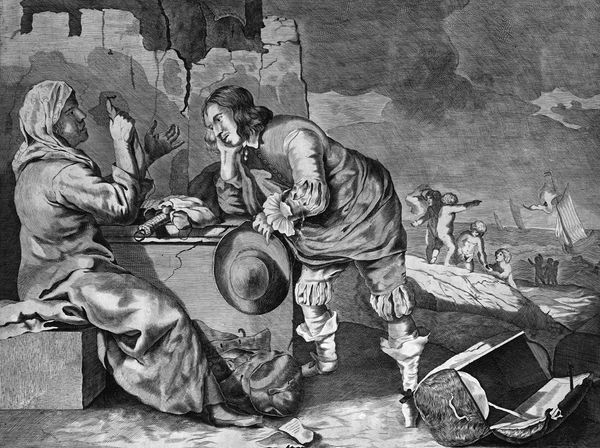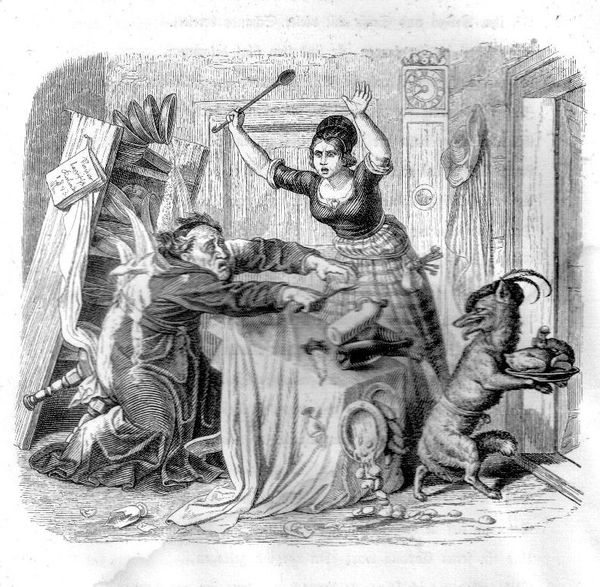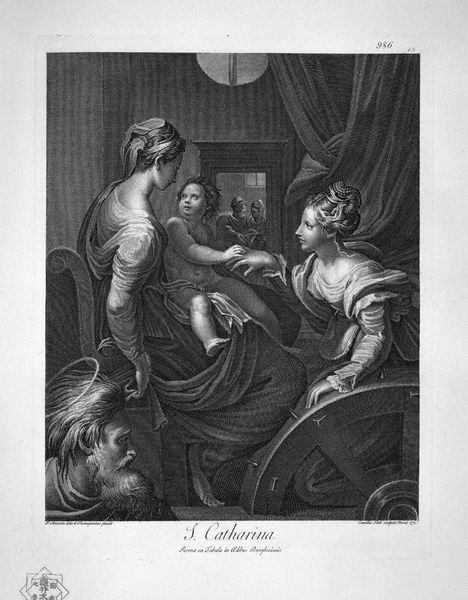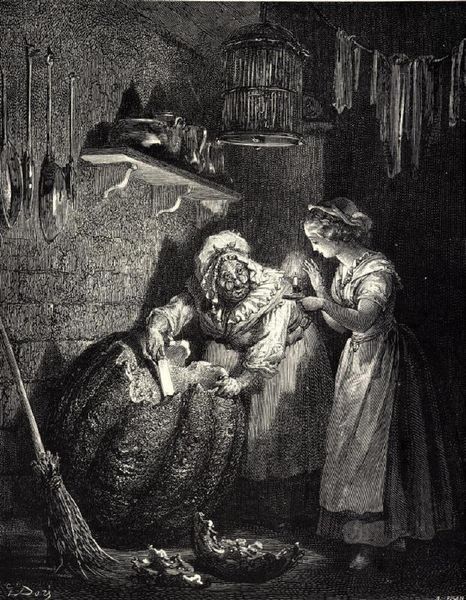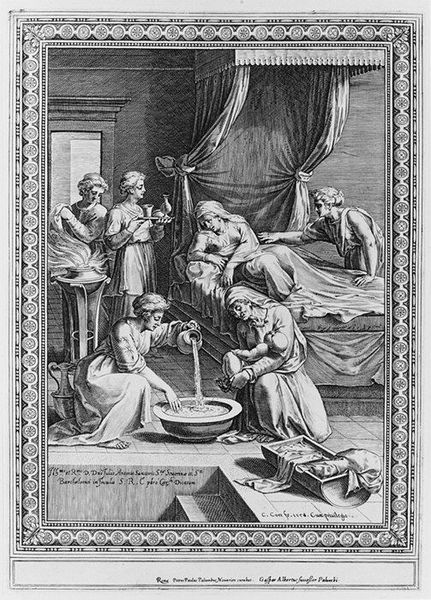
drawing, charcoal
#
drawing
#
narrative-art
#
charcoal drawing
#
figuration
#
romanticism
#
charcoal
#
history-painting
Copyright: Public domain
Curator: Look at this drawing, "Faust rescues Marguerite from her prison" created around 1828 by Eugène Delacroix, rendered in charcoal. Its gloomy ambiance instantly grabs your attention. Editor: It does indeed. The tight composition really amplifies the sense of urgency. There’s something deeply unsettling about the figure on the left. What can you tell us about this prison break in the social context? Curator: Well, Delacroix positions himself in the Romantic movement, and "Faust," a hugely influential work during that era, would be immediately familiar to his audience. It’s drawing upon deeply rooted cultural anxieties about the individual against the overwhelming forces of societal oppression and personal damnation. The scene speaks volumes about the struggle against rigid social norms that the Romantic artists vehemently fought. Editor: Exactly! Note the presence of Mephistopheles, the demonic figure, practically vibrating with chaotic energy as he facilitates the escape. It feels like Delacroix imbues Mephistopheles with a powerful disruptive symbolism. Curator: You see, beyond simply retelling a literary scene, Delacroix tackles the societal anxieties of the time through symbolic representations. Think about the growing fascination with the gothic, the demonic, and the irrational as a counter-narrative to Enlightenment rationality. Marguerite becomes a stand-in for purity incarcerated and tormented by those irrational fears. It provided a potent visual outlet for a society grappling with shifting beliefs. Editor: The very darkness in this charcoal drawing seems intentional. Beyond just shadow, that visual oppression amplifies the symbolic weight. The desperation to cling to faith and perhaps love as tools against being confined and stifled is powerful. The struggle to break free is palpable, and yet there is tension about who these characters are or have become at this critical junction. Curator: Delacroix captures that tension masterfully. You see in "Faust," as it became adopted by intellectuals of the era, an archetype for their struggle. Here, the artist invites the viewer into that drama through the image and lets us project the very meaning of freedom that became an existential goal for people throughout the 19th century. Editor: That is a powerful connection to Romanticism, and a crucial take. As we consider the symbols, from his clothing to hers, so much has already come before the very moments where the scene starts for Delacroix, the rescue is happening and already heavily laden. Curator: Exactly, and perhaps, it already makes us wonder about our current symbols and how the societies, galleries, and media affect our culture now. Editor: Yes, certainly things to keep in mind the next time we visit this or a contemporary exhibit and to consider how time does shift their very existence and what it means for the viewer.
Comments
No comments
Be the first to comment and join the conversation on the ultimate creative platform.

